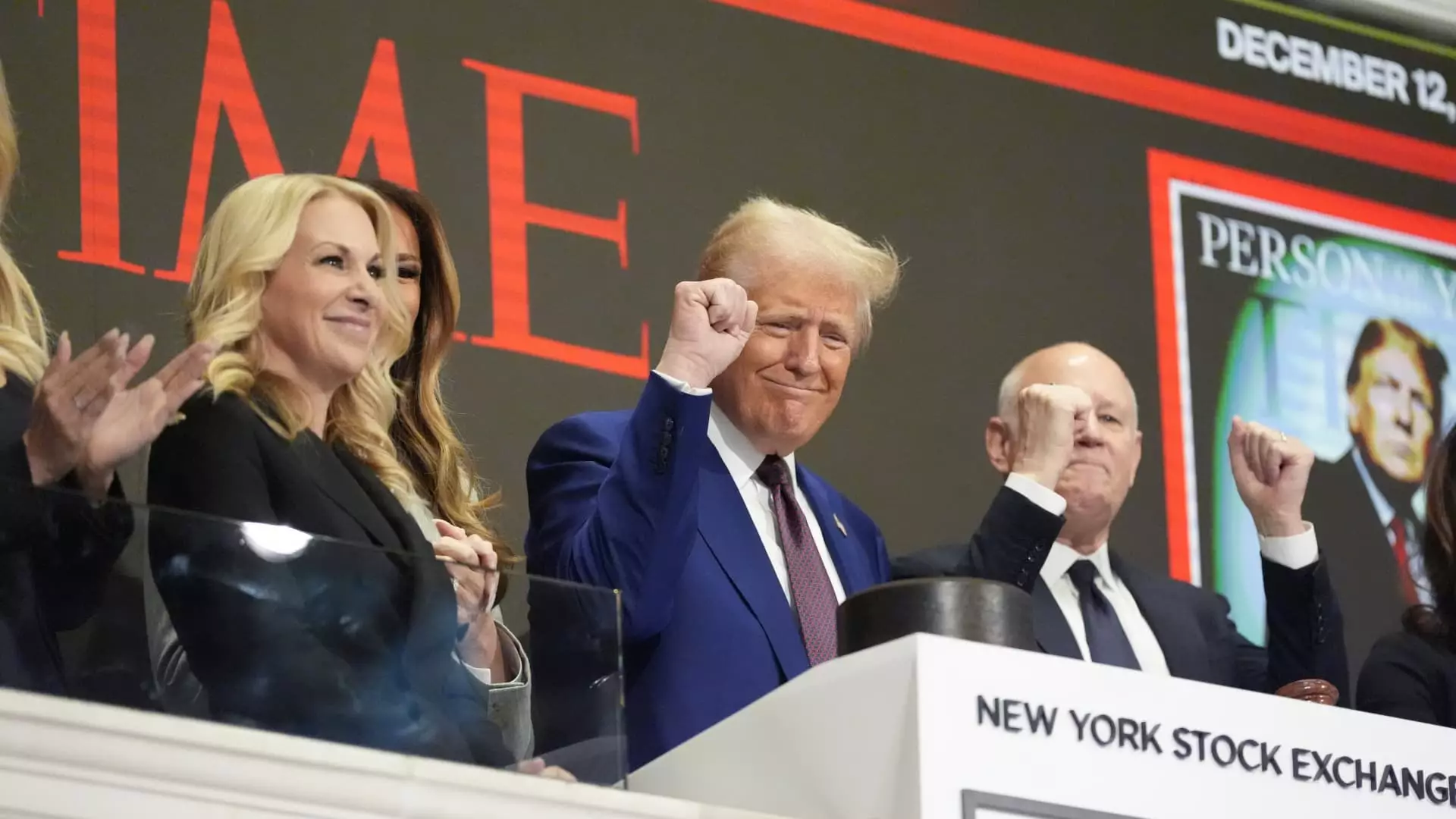In a highly symbolic act, President-elect Donald Trump rang the opening bell at the New York Stock Exchange (NYSE), signaling not only the start of trading but also his grand ambitions for the American economy. This ceremony, steeped in tradition and excitement, attracted a gathering of prominent business leaders and traders, all eager to witness the arrival of an administration that pledges to stimulate economic growth. Trump’s presence, flanked by key figures such as incoming Vice President JD Vance and his wife Melania Trump, amplified the event’s significance, imbuing it with a sense of renewed optimism.
The ringing of the NYSE bell has historically been a marker of market sentiment, and Trump’s appearance continued this old tradition while also harnessing the attention of major financial players. Individuals like David Solomon of Goldman Sachs and Citigroup’s Jane Fraser were present, underlining the interest and anticipation surrounding the Trump administration’s vision for the U.S. economy.
Trump’s message resonated deeply with the crowd, emphasizing his commitment to stimulating economic activities akin to a historical boom. He promised an aggressive tax reform aimed at corporations, unveiling plans to cut the corporate tax rate significantly to 15%, conditional on manufacturing being rooted in the United States. “You pay 21% if you don’t build here,” Trump asserted, aiming to incentivize domestic production. This strategy aligns with his overarching narrative of enhancing American business competitiveness while maintaining a focus on domestic job creation.
The charismatic former businessman positioned himself as leading a renaissance in the economic landscape. His rhetoric was imbued with vigor as he articulated visions of lowered inflation and more accessible grocery prices through expanded oil drilling. However, these claims raise questions regarding practical applicability and the complexities surrounding energy policy in relation to inflation and consumer costs.
While Trump’s proposals exhibit a vigorous commitment to economic revitalization, they are interlaced with contradictions. He previously indicated the difficulty in reducing grocery bills once they have soared, which demonstrates the challenges inherent in his plans. The overlapping complexities of the economy complicate the narrative of an imminent financial boom, as factors beyond presidential control, such as global supply chains and inflationary pressures, bear significant weight.
Moreover, Trump’s electoral victory was cited as a catalyst for recent stock market gains, further embedding his narrative of being the harbinger of economic recovery. However, attributing market performances solely to political change risks oversimplifying a multi-faceted reality in which economic cycles, external influences, and investor sentiments converge.
Another pivotal aspect of Trump’s return to power is the cultivation of relationships with the world’s wealthiest individuals. His dialogues with figures such as Mark Zuckerberg and Elon Musk are indicative of a concerted effort to harness their insights and operational strategies. This tactic not only seeks to consolidate financial support from elite sectors but also reflects Trump’s understanding of the utility of networking in policymaking.
Scott Bessent, Trump’s Treasury pick, echoed Trump’s sentiments regarding the mutual benefits for Wall Street and Main Street, suggesting a continuation of the successes experienced during Trump’s first term. Bessent’s optimism reinforces the administration’s ethos of creating an environment where economic prosperity is shared across economic strata, although delivery on such promises will remain under scrutiny.
As Trump embarks on his new term, the juxtaposition of bold promises against the realities of economic governance remains a central theme. While the ceremonial ringing of the bell may herald intentions of revitalization and economic opportunity, the efficacy of these initiatives will ultimately rely on their execution. Navigating the intricacies of a constantly evolving economic environment will present immense challenges, and the administration’s ability to deliver tangible results will determine whether the anticipated boom materializes or fades into mere rhetoric. As the nation watches closely, the forthcoming policies will be scrutinized for their potential impact on everyday citizens and the broader economic panorama.

